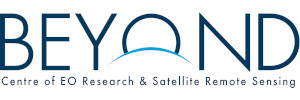
Dr. Haris Kontoes is participating in the AGU FALL MEETING 2018 as an Invited Speaker in the session NH34C: Wildfires: Triggers, Predictability, and Impact Assessment on Wednesday 12/12/2018.
The speech is entitled "THE FIREHUB: A PROTOTYPE OPERATIONAL EARLY WARNING, FIRE DETECTION AND BURNED AREA MAPPING SYSTEM" and more information is available at: https://agu.confex.com/agu/fm18/meetingapp.cgi/Session/62882
Abstract:
The BEYOND FireHub System consists of 1) the Real‐Time Active Fire Monitoring and 2) the Real‐
Time and Diachronic Burnt Scar Mapping services. Real‐Time Fire Monitoring service is a 24/7 active fire detection service for monitoring forest fires in near‐real time. The system ingests satellite acquisitions from every 5 minutes to a few hours from missions MSG SEVIRI, EOS/AQUA &TERRA, SUOMI NPP, and FY satellites. It incorporates fully automatic processing chains for data fusion, modeling and data classification, in the context of a co‐designed and co‐development service approach with the participation of the end‐users. The system accounts for wind, ground morphology and altitudinal data, and integrates together with the satellite observations fuel and fire proneness data in a spatial resolution of 500 m. This is 50 times better compared to the raw resolution of MSG SEVIRI sensor. The system has been validated and calibrated with real data to cover operational needs in the wider area of south‐east Mediterranean. The Diachronic Burnt Scar Mapping service is a fully automatic multi‐sensor processing chain that takes as input satellite images of any available spatial and spectral resolution and produces precise diachronic burnt area and damage assessment products over the wider Mediterranean. The service has mapped the annual burnt areas and the corresponding damages for a period spanning the last 35 years in Greece. It is based on the use of Landsat TM, SPOT XS, IKONOS, FORMOSAT, and recently Sentinel‐2& Sentinel-3 imagery. The service has been enhanced to address near real‐time Burnt Scar Mapping needs at various spatial resolutions, depending on the acquired satellite imagery. It ingests data acquired by the NOA Ground Segment and the Hellenic National Sentinel Data Mirror Site, providing near real time access to Sentinel‐2 and Sentinel-3 data. The underlying algorithm for automated Burnt Scar mapping is based on the innovative use of Level Set methods.
 Click here to see agenda
Click here to see agenda
